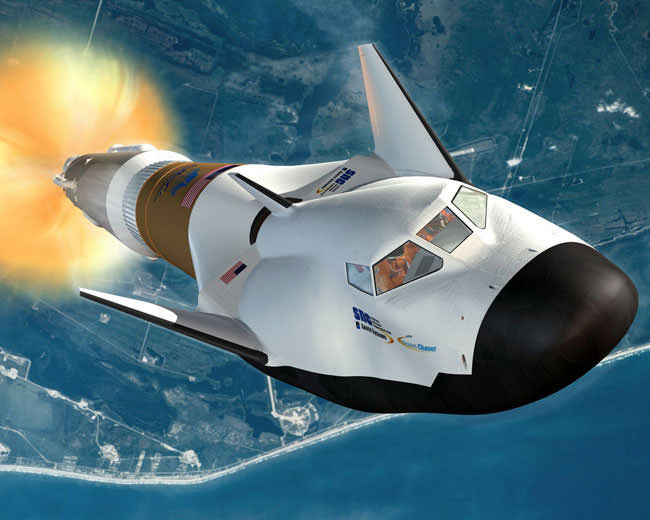The origins of Sierra Nevada Corporation’s Dream Chaser go back over 50 years to the US Air Force’s and NASA’s research into lifting body concepts and the X-20 Dyna-Soar, so this winged, lifting-body spacecraft is one of the tested and reviewed vehicles ever. This new video about the vehicle provides a summary of the development, testing and manufacturing of the Dream Chaser, which will launch on its first orbital testflight in 2016 as part of NASA’s Commercial Crew Program to provide crew and cargo transportation to the International Space Station.
The Dream Chaser is a classic case of not reinventing the wheel.
“A lot of people told us we needed to get a clear sheet of paper and start all over again,” said Mark Sirangelo, the head of Sierra Nevada Space Systems. “We decided we didn’t want to do that. We wanted to build on something.”
The Dream Chaser — which looks like a mini space shuttle — is the only reusable, lifting-body, human-rated spacecraft capable of landing on a commercial runway. It is about 9 meters long (29.5 feet) with a wingspan of 7 meters (22.9 feet).
Read more about the history of the Dream Chaser design here or at the Sierra Nevada website.


It would be awesome if this became a regular shuttle spacecraft to the ISS. Good luck SNC!
Is the front skid going to remain a skid or will it be replaced with a wheel? Is the skid some type of slower downer landing de-momentumifier?
Yup, but who knows if there will be a wheel on the orbiter. A nosewheel is heavier and takes up more room, but does have the advantage of being steerable. Of course this was all somewhat moot in the first free flight, since one of the main wheels hung up, resulting in a rather more abrupt de-momentification phase than planned.
Nice video. Definitely good to see work being done on projects like this…buuut…
It’s not operational, is it? – so seems the article should say something like “The Dream Chaser — which looks like a mini space shuttle — is the only *program actively developing a* reusable, lifting-body, human-rated spacecraft capable of landing on a commercial runway.” since it’s not actually human rated and has not performed as a spacecraft yet…
Or am I wrong?? Which would be awesome.
As article says, the first orbital test flight of the vehicle is in Nov. 2016. The vehicle is built. They had a drop test last year to test the landing (read about it here: http://www.universetoday.com/105795/dream-chaser-spaceship-test-article-damaged-during-1st-free-flight-drop-test/ ) and there will surely be more tests of the vehicle before the 2016 launch.
Thanks for the update Nancy! I’m really liking this ship.. can’t wait to see it rocket powered!
Looks like the right stuff to me….if only it could go up as well?….the old tons of fuel burning to go vertical on a rocket is so dinosaur…thinking this as a hybrid with something like Branson’s thing…tho carrying weight uphill is still a big challenge…but way to go
I got a kick out of the ‘fuzzy dice’ hanging in front of the windscreen!
I noticed that having something dangling in the cabin is also a feature of Soyuz ascents. When watching the videos, the way the pendulum period speeds up gives a nice visual clue of how much G is being experienced. So perhaps the fuzzy dice are slightly more than a whimsical decoration.